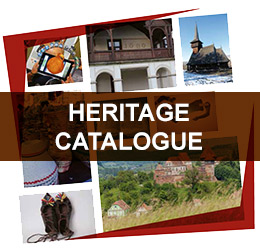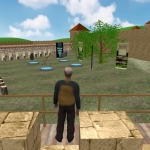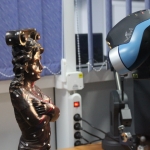
Latest news all news
-
16 Nov. 2017
Results brochure PA16/RO12 -
22 Aug. 2017
Facts regarding the Aromanian heritage -
17 Aug. 2017
Fortified churches (video)
Public procurement
- More information will be available soon
Follow us on Facebook
When ancient daily life becomes UNESCO heritage. Scanning, digital restoration and contextualization of Dacian artefacts from the Orăştie Mountains
Website Facebook pageProject Promoter: Technical University of Cluj-Napoca
Project Partner:
- National History Museum of Transylvania, Cluj-Napoca
- „Babeș-Bolyai” University Cluj-Napoca
- Dacian and Roman Civilization Museum Deva
Project duration: 19 months, but no later than 31.08.2016
Grant amount: RON 4,188,423.25, i.e. EUR 943,232.35
Project objectives
- Digitization of 500 most representative Dacian artefacts in order to promote them at an international level
- The conversion of the 3D digitized models in a compatible format with the Europeana platform
- Collate information regarding the digitized artefacts and create the set of metadata required to implement – Europeana Data Model (EDM)
- Compiling a database for digitized artefacts for their integration within the Europeana platform
- Establishing a 3D online virtual museum dedicated to the Dacian civilization from the Orăştie Mountains
- The Digital reconstruction of monuments and representative artefacts from the Dacian sites from Orăștie Mountains
- The establishment of two specific rooms capable of hosting exhibitions involving combined media: real / virtual
- Create a catalogue that includes the cultural products developed within the project
- The creation of applications for virtual and augmented reality to be used at the new exhibition rooms established by the partners
- Project website, outreach, dissemination of results and publicity
- Developing new digitization capabilities
Expected results:
- The implementation of the project as planned and reporting results in accordance with the project’s requirements;
- 500 digitized artefacts discovered at World Heritage sites listed by UNESCO;
- The conversion of 500 digitized artefacts discovered in Dacian sites included in the UNESCO World Heritage List;
- A database as an open web platform to manage 3D models and metadata in accordance with Europeana, this will be further supplemented with other scanned 3D models;
- 3D virtual museum available online;
- The digital reconstruction of Dacian houses and other domestic structures, workshops, temples and fortifications from Orăștie Mountains: 30 monuments;
- The establishment of two specific rooms capable of hosting exhibitions involving combined media: real / virtual;
- A catalogue for real and virtual artefacts, as well as the Dacian fortresses reconstructions, visible in normal format or anaglyph (3D glasses);
- Multimedia applications developed for the equipment used in the two new exhibition rooms: a minimum of three virtual tours, at least three interactive applications for Microsoft table, at least one augmented reality application for smart devices that are running Android and at least two virtual reality applications that can support stereoscopic view;
- Project dedicated website.
IMPACT
The Dacian fortresses from the Orăştie Mountains are among the most well-known ancient complexes from Romania. The public imagery assigned them multiple meanings nowadays, being regarded as places with strong identity connotation. The historical and archaeological position of these sites is one of high importance as they represent the grandeur of the Dacian kingdom in the 1st century BC – 1st century AD, a specific mark within the landscape of Temperate Europe at the end of the Late Iron Age.
The project When ancient everyday life becomes UNESCO heritage. The scanning, digital restoration and contextualization of Dacian artefacts from the Orăştie Mountains aims to bring the public in front of Dacian artefacts and monuments discovered in the Orăştie Mountains but in an unusual way. There is a high peculiar interest within the Romanian society for archaeology, especially for the Dacian civilization. The numerous publications, media events and, now, the virtual environment, all more or less accurate from a scientific point of view, are arguments in this matter.
The project’s results will be available to all those seeking for valid and reliable information. The project follows the 2006/585/CE Recommendation of the European Comission which supports the digitization and the increase of accessibility of the cultural heritage together with its digital conservation. Furthermore, due to its specificity, the project subscribes to the CARARE programme (Connecting Archaeology and Architecture in Europeana), specifically created to load on the Europeana platform archaeological monuments and artefacts, historical edifices and heritage, in 3D format.
At the same time, the project is consonant with the Sectorial Strategy for Culture and National Heritage for 2014-2020 issued and published by the Centre for Research and Consultancy in Culture. It is stated, for the chronological segment of 2017-2018, 50% of the category A historical monuments and Thesaurus classified assets will be digitized alongside the display from Romania of an annual average of 100,000 digitised cultural resources in the European Digital Library.
The project was implemented by the Technical University of Cluj-Napoca in partnership with the National Museum of Transylvanian History Cluj-Napoca, the Babes-Bolyai University Cluj-Napoca and the Museum of Dacian and Roman Civilization Deva. Through the project’s main objective (the digitization of 500 representative Dacian artefacts) important aspects of the Dacian civilization from the Orăștie Mountains are available online to the general public.
The results of the project make available to the general public and to specialists around the world the historical / archaeological heritage specific to Dacian sites from the Orăștie Mountains (monuments on the UNESCO list since 1999). The contextualization of the digitalized monuments and artefacts with specialty information responds to the need of knowing about the cultural inheritance of antiquity, especially about the Dacian one, and it generates positive responses towards the cultural heritage.
In the online database hosted on the project’s website there are 500 Dacian artefacts available accompanied by the archaeological and historical information, thus allowing their contextualization and their valorisation. This combination allows the general public to understand the role and functionality they had in antiquity.
The project’s database offers downloadable 3D models of the scanned artifacts in 3DPDF format, which is agreed by Europeana. In February 2016 Europeana announced that it integrated the Sketchfab.com viewer which is capable of providing stereoscopic visualization of 3D models. The project’s database is among the few in Europe that is capable of providing the visualization of the entire digitized artefact collection with this viewer. This was made possible by using a complex algorithm for processing data obtained from the 3D scanning, which allowed the reduction in size in MB of the 3D models, but still maintaining their quality.
The database interface is built in such a way that it also offers users with smart devices a pleasant navigation experience. They can interact with the 3D models directly through the web browser of their phone or tablet without needing any other special applications.
The project implementation has enabled the development of the digitization capacities of the project promoter and partners through the acquisition of two laser scanners for artefacts and a terrestrial scanning solution composed of: a short distance (180 m) laser scanner, a long distance (1800 m) terrestrial laser scanner and a total station. With their help the project implementation team has digitize the artefacts and monuments in high resolution (approximately 50 μm to 1 mm for artefacts and monuments).
Within the project two exhibition spaces have been developed, these exhibitions are capable of hosting mixed real / virtual exhibitions. Facilities within these exhibition spaces include 3D projectors, big screens, high fidelity televisions and monitors, haptic devices, Kinect sensors and multi touch tables, etc. Multiple applications for these devices were created within the project. These applications allow gestures based interaction with digitized artefacts and monuments.
Within the project a catalogue was printed which contains written material and images that highlight the everyday life in the ancient mountains Orăştiei. Thus with aspects of nutrition, domestic activities, crafts practiced in this area, trade, agriculture, housing and religious architecture, weapons and military architecture and art and imagination of what we can call the Dacian civilization near Hunedoara.
The catalogue can be downloaded from here
A novelty for the museum curator activity field of Romania is to create 3D reconstructions of the Dacian monuments as 3D puzzles. These puzzles have been created using the 3D printed equipment acquired within the project. These tangible 3D reconstructions will be used in different museum pedagogy activities that will take place in the two exhibition areas developed within this project.
Through the implementation of the project, the public has easy access to a significant number of monuments and artefacts belonging to the Dacian civilization and to their related scientific information (online and in the two exhibitions from Cluj-Napoca and Deva). The 3D models have a high quality and visitors can interact with them both in the online environment and also at the two exhibitions mentioned above, in a way that is not possible in the case of real-life exhibits or monuments.
The general public is very interested in the cultural heritage of ancient Dacian knowledge. The way to access the virtual version (3D models) of the representative monuments and artefacts, accompanied by proper scientific information, is both convenient and attractive.
Both the general public and the specialized one (scientists, students, researchers, students, and teachers) enjoy freely the cultural products of the project and quality scientific information. These cultural products can be used also as research resources and in education.
Photo Gallery
Scanning process
3D reconstruction
Closing conference
Other photos






